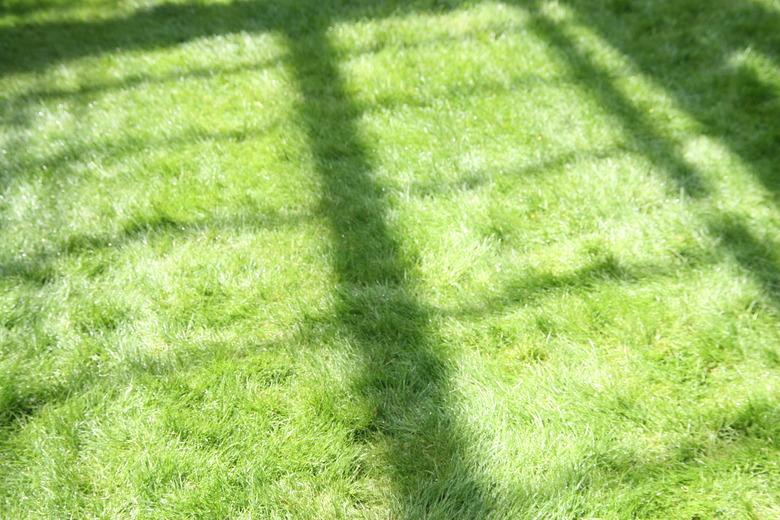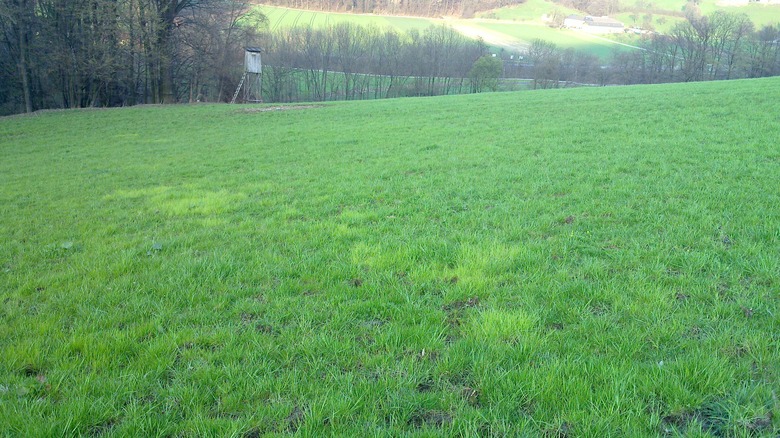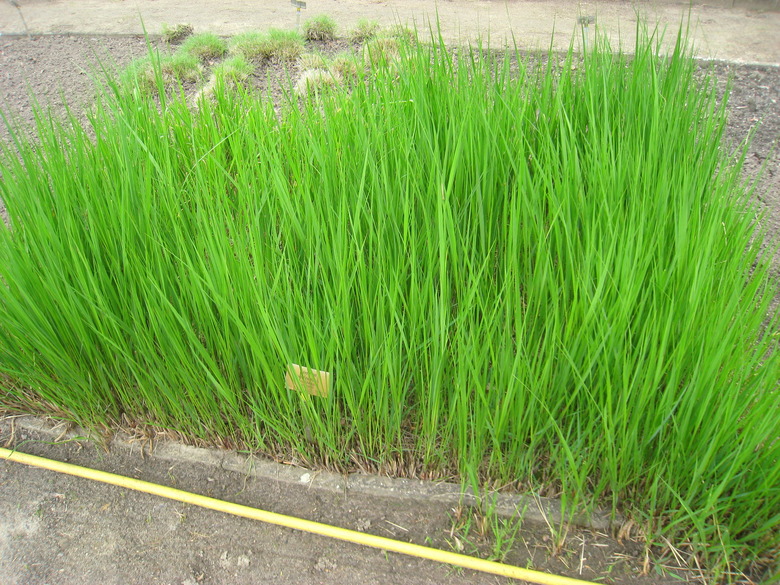How To Grow Grass In Mud
What Can You Do to Fix a Muddy Lawn?
If your garden is more mud than soil and you want a new lawn, you need alternatives to the usual turfgrass. If your yard is really wet, you may need to turn to ornamental grasses instead.
Most wet areas are in the shade, often under trees or where drainage is poor. These areas can be infested with moss, which competes with turfgrass in the environment.
The best strategy when you want new grass and your existing lawn location is muddy is to try to correct the drainage problem before planting grass seed, recommends Rutgers University. Installing subsurface drainage systems such as perforated pipe or stone can go a long way toward ensuring a healthy lawn in the future. However, if that is not an option, here are some ways to work around a waterlogged location.
The Best, Maybe Only, Grass for Mud
The type of grass seed recommended for wet locations with compacted soil is usually "rough bluegrass" or "roughstock" bluegrass (Poa trivialis, USDA hardiness zones 3 to 7). This grass produces a light-green lawn.
Rough bluegrass, a perennial, cool-season grass, is considered a weed in many locations, as it can invade other, more desirable grasses in shady areas—but if your area is too wet for other grass seed, that will likely not be an issue. Available commercial varieties are less invasive than the volunteer weedy types that typically invade lawns.
Tip
There are no warm-season grasses recommended for very wet areas.
Rough bluegrass is sometimes used for winter overseeding. It has a fine texture compared to Kentucky bluegrass, for example, and an extensive, although shallow, root system that spreads via underground stolons. And it loves moisture! If your poorly draining, muddy area were to dry out, rough bluegrass would enter a dormancy period or die.
Growing Rough Bluegrass
Rough bluegrass is generally available as seed rather than sod.
Planting Seed
Because rough bluegrass is a cool-season grass, the best time of year to plant it is 45 days before your area's first expected fall frost. While a soil test would be ideal for identifying any nutrient deficiencies and soil pH, rough bluegrass is tolerant of an alkaline pH that could cause iron chlorosis in other types of grass seed; however, shoot for a soil pH no higher than 7.5.
Before sowing new grass seed, prepare the soil surface with amendments as necessary by adding organic matter, such as peat moss or well-rotted manure, to the top 2 or 5 inches to improve aeration. A dressing of topsoil can be helpful.
Spread new grass seed at a rate of about 80 to 120 pounds per acre, which translates to approximately 1 to 1.4 pounds per 500 square feet.
Lawn Care
Fertilizer: When growing in wet, mostly shady areas, rough bluegrass needs more lawn fertilizer than some typical turfgrasses—in particular, nitrogen. The ideal strategy is to alternate applications of a balanced fertilizer with one that has an NPK ratio of about 5-2-1, where the first number is nitrogen, the second phosphorus and the third potassium. Use a balanced starter fertilizer at initial sowing, then alternate NPK with the balanced solution during the growing season time of year, in fall, winter and late spring. Irrigation: If your weather happens to dry out, irrigate regularly. In extremely dry weather, rough bluegrass will become purplish-brown and may die off completely. Mowing: Mow regularly, as with any type of grass. Set your lawn mower to a height of no less than 1/2 inch and maintain a height of 1/2 to 2 inches. Use lawn herbicides to control broadleaf weeds.
Ornamental Grasses as Alternatives to Lawns
If your lawn is so waterlogged that it's tough to prepare the soil for grass seed germination or you have tried a lawn and it hasn't thrived, consider ornamental grasses instead. Many homeowners are incorporating ornamental grasses into their landscapes, sometimes instead of growing grass, so you won't be alone.
Several ornamental grasses thrive along creeks and rivers in woodlands across the country. In a sunny location, try prairie cordgrass (Spartina pectinata, USDA zones 4 to 9) or big bluestem (Andropogon gerardii, zones 4 to 9). Big bluestem reaches heights of 4 to 6 feet with a spread of 2 to 3 feet. Prairie cordgrass is even larger with a height and width of 4 to 7 feet.
For a partial sun or more shaded location, consider switch grass (Panicum virgatum, zones 5 to 9) and some sedges, most of which tolerate wet locations. Try gray sedge (Carex grayi, zones 5 to 9) or fox sedge (Carex vulpinoidea, zones 3 to 7). Switch grass reaches 3 to 6 feet high and 2 to 3 feet wide, while gray sedge is a more compact grass reaching 2 to 3 feet in height with a spread of under 2 feet, and fox sedge is even smaller, with a height of 1 to 3 feet and a spread from 0.5 to 2 feet.
References
- Michigan State Universit: Rough Bluegrass
- Iowa State University Extension and Outreach: Native Perennials for Moist to Wet Soils
- Penn State Extension: Lawn and Turfgrass Weeds: Roughstalk Bluegrass (Poa trivialis L.)
- Penn State Extension: Growing Turf Under Shaded Conditions
- Rutgers University: Seeding Your Lawn
- Clemson University: Plants for Damp or Wet Areas


